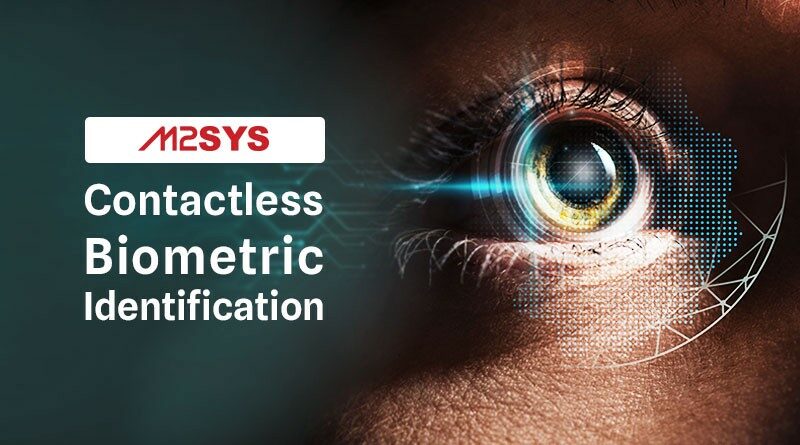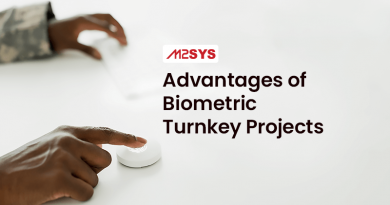What is a non-contact biometric identification system?
Fingerprints have remained a common biometrics identifying method. Smartphones, laptops, and other intelligent security technology are literally at the tip of one’s fingers. The covid-19 outbreak, of course, forced some concessions, and fingerprint biometrics, in which sensors require close contact with a finger, are no longer as safe for a person’s health as they once were. That is why using a non-contact biometric identification system is becoming more common. Cloud biometric service provides access to a variety of contactless biometric models.
What is a non-contact biometric identification system?
So mostly, we all understand what a biometric identification system is, right? The method and process of employing biometrics to identify someone requesting access to secure systems is known as biometric identification. A biological system can compare scanned features against a recorded digital identity to identify if a person is who they claim to be using physical attributes such as fingerprints, face scans, or distinctive handwriting styles.
Biometrics are essential in authentication because they provide precise and long-lasting identity proof. A non-contact biometric identification system provides the physical traits required to authenticate a person without requiring any touch with the authentication device. It could be a smartphone, a laptop, or another scanning device.
There are various authentication methods, and not all of them support non-contact biometric identification. However, the top three most prevalent non-contact biometric identification modalities are as follows:
1. Facial recognition
Recognizing people by their faces. This sort of biometric identification has been shown to be one of the most user-friendly non-contact biometric identification methods. Facial recognition technology does not require close human-machine interaction to function effectively. And, because of the strength of Artificial Intelligence, the algorithms that enable face recognition are becoming more accurate. As a result, under ideal conditions, facial recognition systems can attain near-perfect accuracy. According to one study, face recognition accuracy can reach 99.97 percent.
2. Iris recognition
The structure of an iris is unique to each person, and even identical twins with comparable eyes do not have the same iris pattern. Irises resemble fingerprints in appearance, but they are more difficult to hack. Iris-recognition systems typically convert each pattern into a binary code, which the program may quickly compare to other codes in a database. There is currently sufficient reason to believe that commercial iris recognition will improve to the point where it will be capable of meeting future security challenges.
3. Vein recognition
Biometric fingerprinting and palm or finger vein capture are employed in banking and financial applications. These gadgets use infrared scanners to match veins and examine beneath the person’s skin. To match vein patterns, oxygen-poor blood in veins absorbs more infrared light than surrounding tissue.
Hand veins are a type of biometric that is used to guarantee one’s privacy. Unlike fingerprints, vein geometry is nearly impossible to recreate and cannot be stolen. It is also totally contactless. Using a non-contact flash of infrared light, the approach maps internal vein anatomy without contacting any sensors. For these and other reasons, the vein biometrics industry is predicted to earn more than $1 billion per year by 2029, led by banking, financial services, and insurance.
Using one or multi multiple modalities may appear to be a difficult task. However, with the help of a cloud-based biometric service, you can quickly connect one or more modalities with any existing web or desktop-based application via a web API.
Advantages of a non-contact biometric identification system
A password can be stolen. An unauthorized person could see you type it in, figure out where the password is while you’re writing it down, or guess it. This would not be the case with an on-contact biometric identification system. Aside from being accessible and eliminating the need for users to learn passwords, biometric authentication has a lot of benefits. And these benefits are based on the human traits on which this authentication technique is built.
Regardless of the biometrics approach, we adopt or what a biometric system is utilized for, they all capture unique human traits. Personal differences and patterns can thus be utilized to distinguish them.
They are universal in the sense that everyone possesses or expresses them. They’re measured so that future comparisons can be made. The biometric trait is long-lasting. They are either permanent or temporally invariant, and they are collected reliably. If the biometric verification reader is given permission, they can be recorded. Biometrics uses qualities that can’t be duplicated through deception, making them tamper-proof.
These are true for both contact and non-contact biometric identification systems. But let’s discuss only non-contact biometric identification systems. The main benefit is that no physical touch is required, which is ideal for the post-covid era. The Hitachi VeinID Five contactless finger vein biometric single sign-on (SSO) solution, for example, allows you to enter your Windows-based laptop PCs simply by raising your hand.
A non-contact biometric identification system, covid or no covid, has endless potential. This phenomenon has been facilitated by the advent of cloud-based biometric services. Get in touch with us right away if you’re interested in using a non-contact biometric identification system.












Interesting post, thanks for sharing.